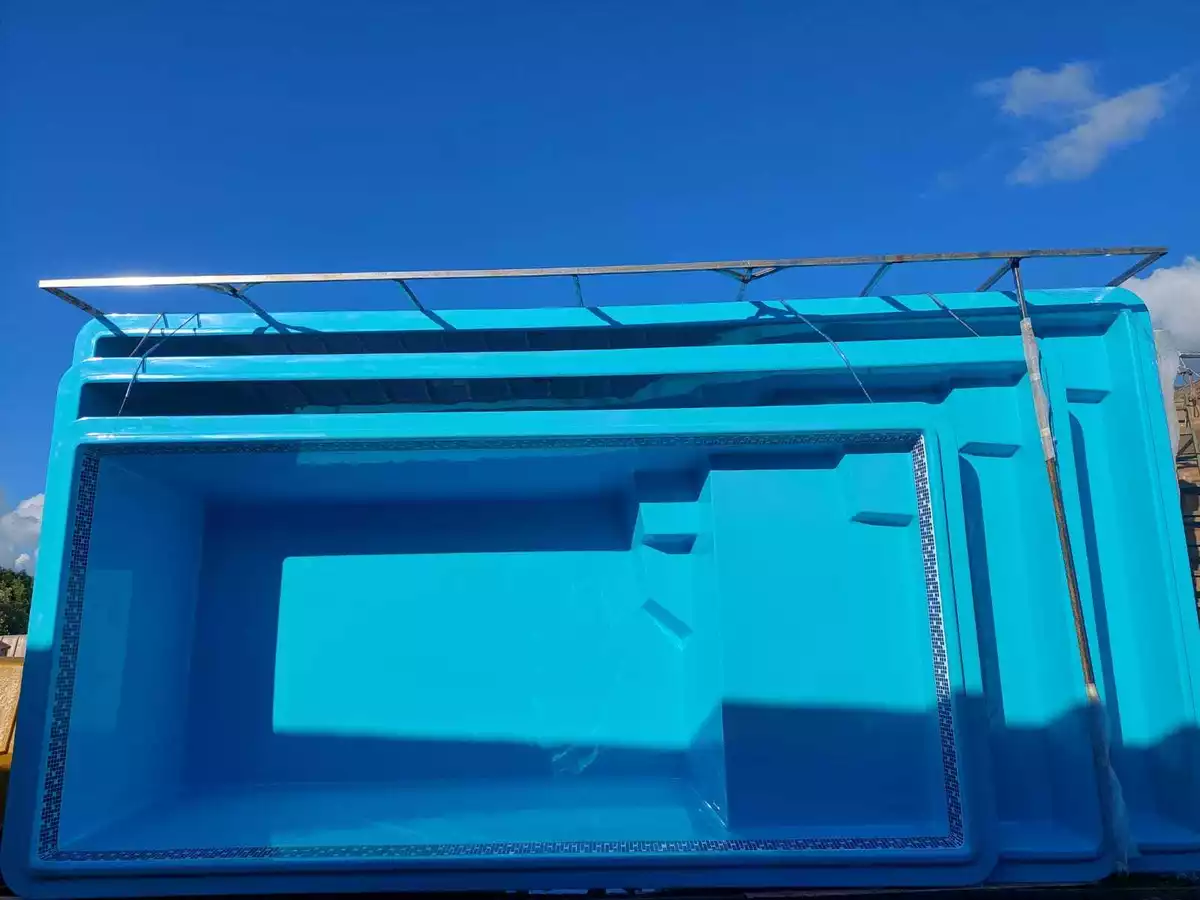Fiberglass pools have gained immense popularity among homeowners looking for a durable, low-maintenance, and aesthetically pleasing swimming pool option. If you are considering adding a pool to your backyard, understanding the benefits, installation process, and maintenance requirements of fiberglass pools can help you make an informed decision. Here’s a comprehensive guide on fiberglass pools.
What is a Fiberglass Pool?
A fiberglass pool is a type of swimming pool made from a single piece of molded fiberglass, a strong and lightweight material composed of woven glass fibers and resin. These pools come pre-fabricated and ready to be installed in your backyard, offering a range of shapes, sizes, and designs to suit different preferences and landscapes.
Benefits of Fiberglass Pools
-
Durability: Fiberglass is a highly durable material that resists cracking, fading, and deterioration. Unlike concrete pools, fiberglass pools are less prone to damage from harsh weather conditions and ground movement.
-
Low Maintenance: The smooth, non-porous surface of fiberglass pools makes them resistant to algae growth and easier to clean. This reduces the need for frequent scrubbing and the use of harsh chemicals, saving time and money on maintenance.
-
Quick Installation: Fiberglass pools are pre-manufactured in a factory and then transported to your home. This allows for a much quicker installation process compared to concrete pools, which can take several months to construct. Most fiberglass pools can be installed within a few weeks.
-
Aesthetically Pleasing: Fiberglass pools come in a variety of colors, finishes, and designs, including built-in steps, benches, and ledges. This allows homeowners to customize their pool to fit their aesthetic preferences and backyard design.
-
Comfort: The smooth surface of fiberglass pools is gentle on the skin, making them more comfortable for swimming and lounging compared to rough concrete surfaces.
-
Cost-Effective: While the initial cost of a fiberglass pool may be higher than a vinyl liner pool, the long-term savings on maintenance and repairs make it a cost-effective option over time.
Installation Process
-
Planning and Design: The first step in installing a fiberglass pool is selecting the pool design that fits your needs and preferences. Consider the size, shape, and features you want in your pool. Work with a professional pool installer to plan the layout and location in your backyard.
-
Excavation: Once the design is finalized, the installation process begins with excavating the area where the pool will be placed. The hole is dug to the exact dimensions of the pool shell.
-
Setting the Pool: The pre-fabricated fiberglass pool shell is transported to your home and carefully lowered into the excavated hole using a crane. Precise leveling and positioning are essential to ensure the pool sits correctly.
-
Plumbing and Backfilling: After the pool is set, the plumbing and electrical connections are installed. This includes the filtration system, pumps, and lighting. The area around the pool is then backfilled with gravel or sand to secure the pool in place.
-
Finishing Touches: The final steps involve installing the pool deck, landscaping, and any additional features such as waterfalls, slides, or pool covers. Once these elements are in place, the pool is filled with water, and the filtration system is activated.
Maintenance Tips
-
Regular Cleaning: While fiberglass pools require less maintenance, it’s important to regularly skim the surface to remove debris and vacuum the pool floor to keep it clean.
-
Water Chemistry: Maintain balanced water chemistry by regularly testing and adjusting pH, alkalinity, and chlorine levels. This helps prevent algae growth and keeps the water safe for swimming.
-
Filter Maintenance: Clean the pool filter regularly to ensure it operates efficiently. Backwash or replace the filter as needed.
-
Inspect for Damage: Periodically inspect the pool shell for any signs of damage or wear. While fiberglass is durable, small cracks or blemishes should be addressed promptly to prevent further issues.
-
Winterizing: If you live in a region with cold winters, properly winterize your pool by lowering the water level, draining the plumbing, and covering the pool to protect it from freezing temperatures.












